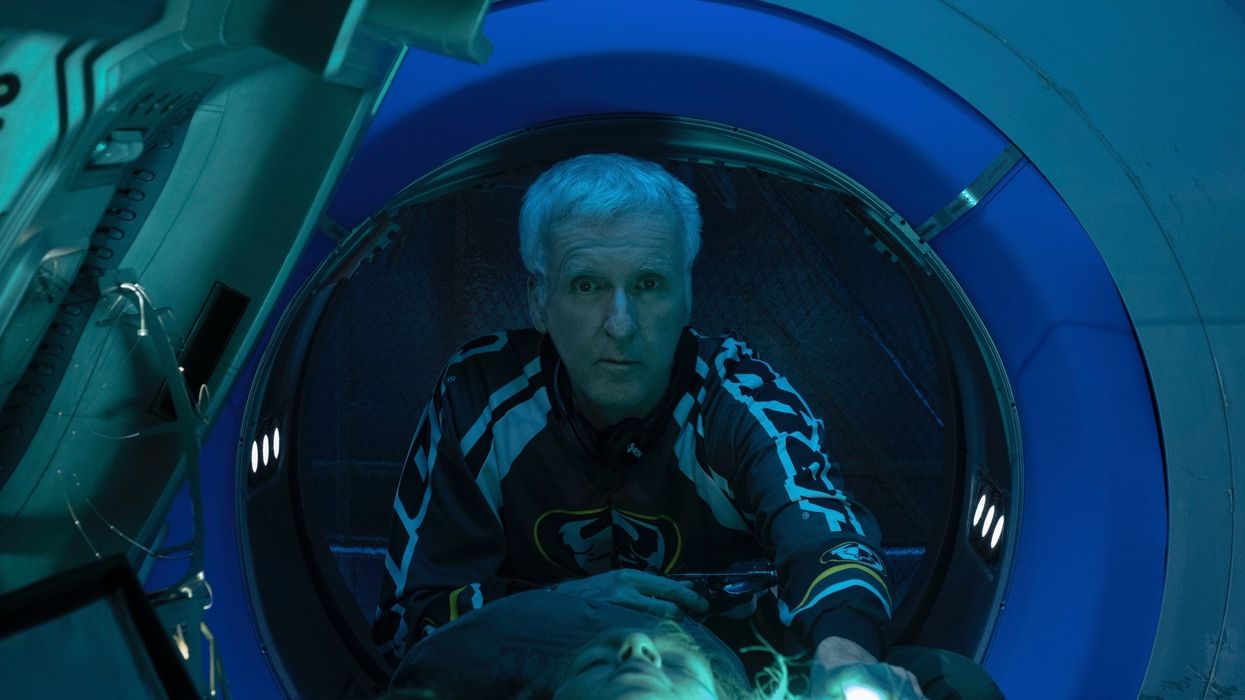This Is James Cameron's "Simple Hack" to Show Two Frame Rates in Theaters
How do you show altering frame rates on a standard theater projector?

James Cameron has found himself working at the center of a technological revolution. His new project Avatar: The Way of Water was shot on cameras that he helped invent and edited with technology that he pioneered, and now he is pushing the boundaries of high frame rates.
Although Cameron told IndieWire that he wasn't a fan of high frame rates back in 2019, the director had to use the format as a solution for specific shots in the film that rely on 3D projection.
While Avatar: The Way of Water has some scenes shot with a high frame rate, the dialogue scenes will have a standard frame rate of 24fps. The problem is that most theater projectors cannot handle showing two frame rates, let alone higher frame rates.
The Limitations of Higher Frame Rates
There have been several attempts to distribute HFR versions of films worldwide. Unfortunately, most of those attempts have been unsuccessful with theater owners and audiences. The problem is the cost of upgrading projectors, the perceived lack of cinema aesthetics, and the low attendance rates.
Cameron won’t let these projection issues stop him from bringing high-frame rate projection to standard cinemas for Avatar: The Way of Water.
By working within established digital cinema specifications, which allow for digital cinema package screenings at 48fps, Cameron will be able to project a slightly altered version of his HFR film.
James Cameron BTS on 'Avatar: The Way of Water'Credit: 20th Century Studios
How Cameron Altered Avatar: The Way of Water's Frame Rate
The majority of 3D-enabled cinemas can project this higher frame rate with ease, making it the perfect solution for Cameron and other filmmakers who want to use higher frame rates in their projects.
According to Variety, HFR filmmaking has its creative limitations.
“We’re using [high frame rate] to improve the 3D where we want a heightened sense of presence, such as underwater or in some of the flying scenes,” Cameron told audiences via video call at the Busan International Film Festival in South Korea. “For shots of just people standing around talking, [high frame rate] works against us because it creates a kind of a hyper-realism in scenes that are more mundane, more normal. And sometimes we need that cinematic feeling of 24fps.”
While there won’t be a noticeable difference between the average 24fps and Cameron’s 48fps, the human eye still notices that something is off when the image is smoother and more realistic.
What’s Cameron’s solution to those moments that should be viewed at 24fps?
“In any part of the scene that we want at 24fps, we just double the frames. And so, they actually show the same frame twice, but, but the viewer doesn’t see it that way,” Cameron reveals. “And so, we just were essentially using a simple hack to use the HFR platform that already exists.”
James Cameron at the Busan International Film Festival in South KoreaCredit: Marcus Lim
Cameron is trying hard to make sure that the audience sees the best and most cinematic film when they go to his long-awaited sequel. Although film projection technology cannot meet Cameron's desire for two altering frame rates, his solution to double the lower frame rate is simple and easy.
While the question regarding the future of HFR remains, we are looking forward to seeing how the film-watching community adapts to these technological filmmaking advancements.
Is HFR the future of filmmaking and film-watching? Do theater projectors need to make an upgrade soon? Let us know what you think in the comments!
Source: Variety











